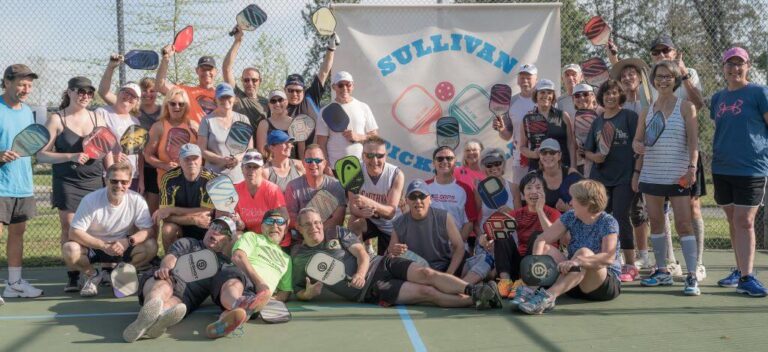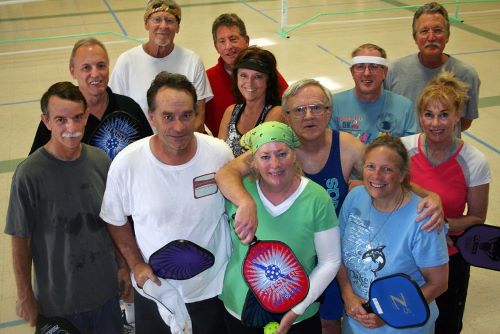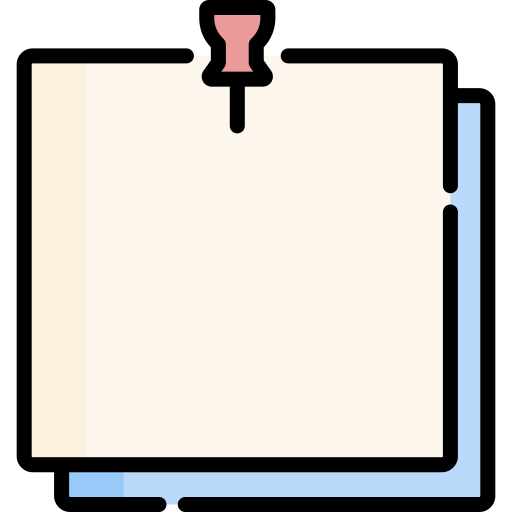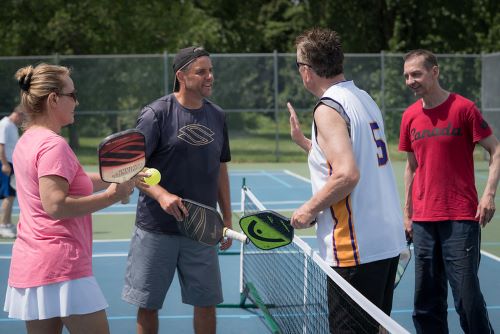Pickleball is one of the most notable sports that is rising in popularity. With more and more people engaging in the sport, some might want to tout their competitive spirit and challenge others through a tournament.
Because of how new pickleball is, the best tournament format for it is one that caters to everyone who joins and provides them with the opportunity to play against every participant. This is why a round-robin format is perfect for pickleball.
Why Is Round-Robin a Better Format than Knock-Out Tournaments in Pickleball?
Before jumping right into the various variations of pickleball round robin, it is important to understand how round robins are the optimal tournament format for the sport.
Pickleball is a relatively new sport with an even newer competitive scene. In fact, the first-ever pickleball tournament was played in 1976 in Washington. That’s almost a hundred years after other well-known racquet sports like badminton and tennis.
With this in mind, a round-robin tournament format is better in that all players will be able to play more, and consequently learn more. Here is a comparison of what a round-robin can provide compared to a knock-out tournament format:
| Round-Robin | Knock-Out |
|---|---|
| Provides an equal and good amount of playing time for everyone. | Does not guarantee plenty of playing time, especially for those knocked out early. |
| The players have a higher chance to play with and against everyone throughout the entirety of the tournament. | The players will not get to play against everyone on the roster. |
| Players have a higher chance to play with and against everyone throughout the entirety of the tournament. | Players will not get to play against everyone on the roster. |
| Less pressure to win every game since players are not automatically eliminated after a loss. Players will feel more lax and less stressed. | Every game bears more weight as players are out of the tournament if they lose a game. The pressure to outperform opponents is higher. |
| At the end of the day, it’s all about bringing more people together. | At the end of the day, the best one is the one left standing. |
The Mechanics of a Conventional Round-Robin
As mentioned earlier, a round-robin format lets every participant play against each other at least once. This gives players the opportunity to experience playing against a variety of personalities and playing styles.
Most sports, if not all, use this type of format in casual and amateur tournaments since there is no seeding whatsoever, and sets an equal playing field for all.
The round-robin format is usually accompanied by a win tally to determine the top players through their wins and losses throughout the tournament. The points will decide who will go through the next stages or, alternatively, straight out win the tournament.
This will be touched on more later.
Pickleball Round-Robins
With the mechanics of pickleball, you can run a variety of different round robins. These variations revolve around who you get to play with and who you get to play against in some instances.
Here are the well-known variations of pickleball round robins, some tips on how to manage such formats, and, of course, the tournament essentials.
Pair vs. Pair Round Robin
In this format, people will have to participate in the tournament as pairs, not as individuals. So before entering the tournament, you would have to bring along a friend or acquaintance to play as your partner throughout the entire tournament. This can be same-gender pairing or mixed-gender pairing, depending on the organizer’s preference.
It would be best to have an even number of teams to have a smooth and continuous flow of the tournament per round. In the event that there is an odd number of teams, one team would not be able to play in a round that’s called a “bye” round.
Team Round-Robin
Pickleball teams are also prominent and in need of formal tournaments, where they can test their skills against similarly skillful teams. This can be done through a team vs team round-robin involving two clubs or teams facing each other.
This differs from the usual round-robin since in this variation, players won’t face everyone. They only get to face players in their skill level, and the tournament spans only two rounds, resulting in a fewer number of games.
How this works is that teams assemble their players in a line, based on skill level. Stronger players are first while the newer, arguably weaker players are last. With this system, the best of one team gets to face off against the best of the other team, the second best with the other second best, and so on. In the second round, #1 will face #2, #2 will face #1, #3 goes against #4, and so on.
Random Pairing Round-Robin
This format is a more creative and less competitive way to organize a pickleball tournament. How it works is that not only will there be a rotation of opponents per round, but also your pickleball teammate. So in every round, you will face a new opponent and have a new teammate as well. This allows people to meet new friends and socialize, making it good for team- and community-building events.
In order to determine how the rotations will go, the common protocol is to assign a number per player and plan the schedule. This can be done through drawing lots like in the lottery. After that, all they have to do is check the schedule and find their number.
Finishing up A Pickleball Round-Robin
Once the round-robin is done and everyone has had a chance to play with every single player, the tournament can either move on to another stage or simply end, with the one having the most wins being the overall winner.
Longer tournaments usually transition from a round-robin to a knock-out system. The round-robin is utilized for seeding the players, to determine who faces who in the later stages of the tournament. Once done, a series of knock-out stages are played to further eliminate players until just one remains.
Shorter tournaments, such as community events and the like, usually end by crowning the one with the most wins after the round-robin as the winner. This is done for events that don’t have much allotted time and budget.
In case the top players are tied on the number of games won, the winner is usually determined by adding up the points scored in all the games played and then deducting it from the total points conceded throughout the entire tournament. The result is called the point differential and the player with the highest point differential wins.
Conclusion
It is important to remember that the essence of pickleball is to just have fun, and the pickleball round-robin format encapitulates that. By playing the sport in a round-robin format, players get to meet people of different social backgrounds, ethnicities, and personalities. This further develops the sport and builds relationships through which people can better enjoy pickleball in the future.




































